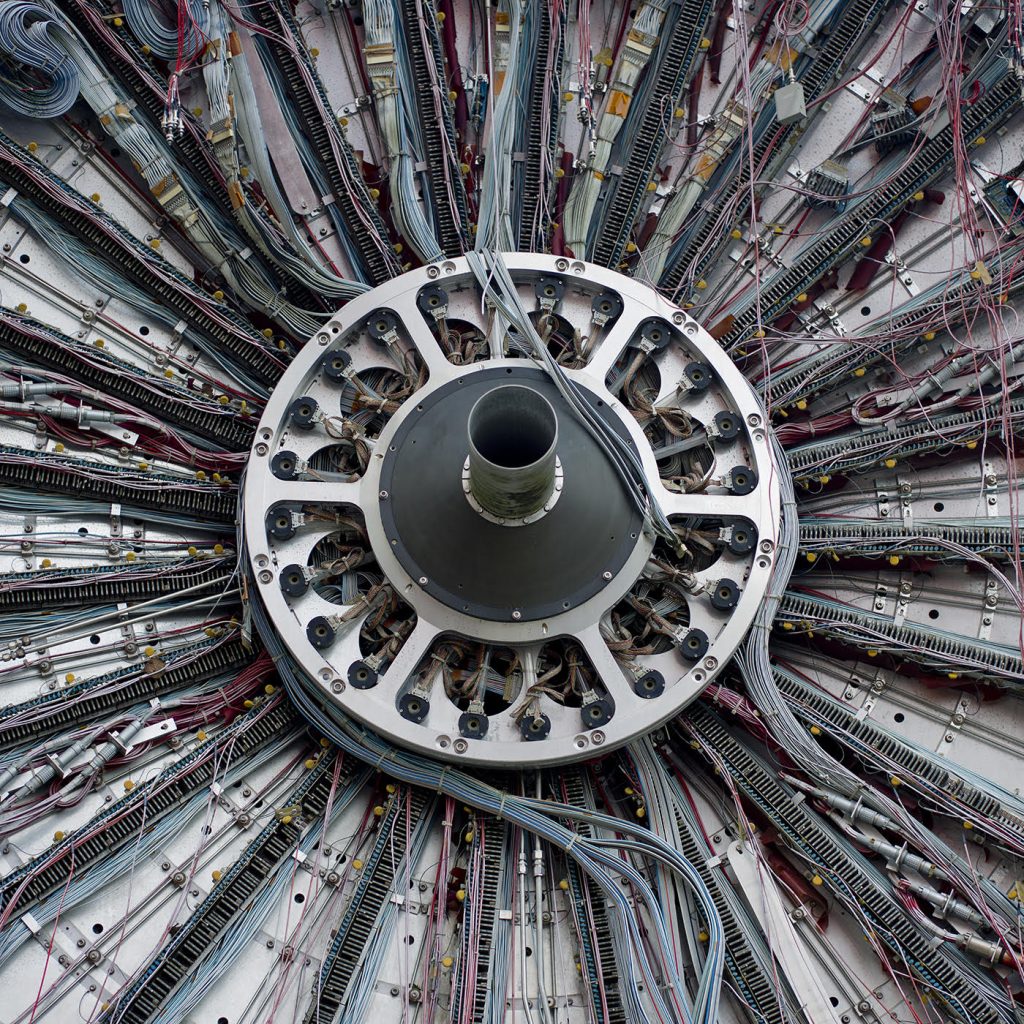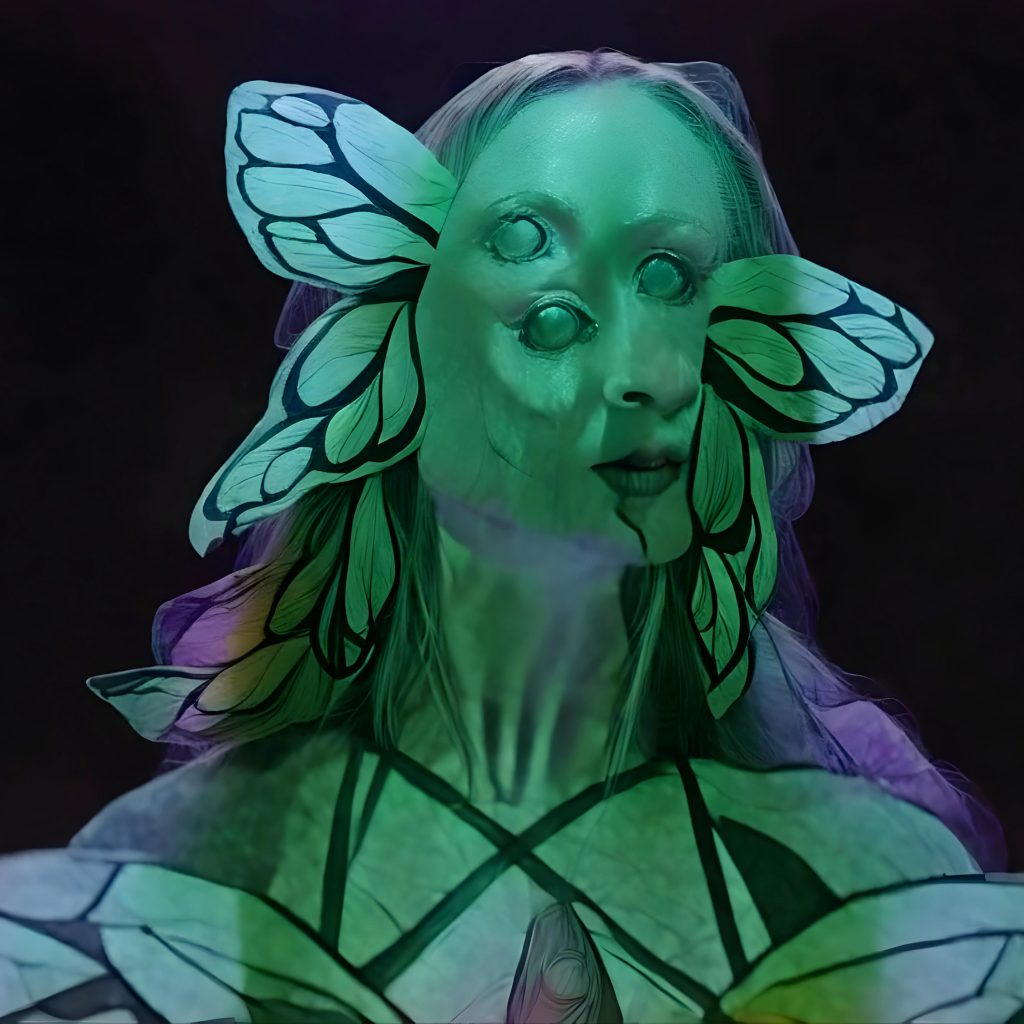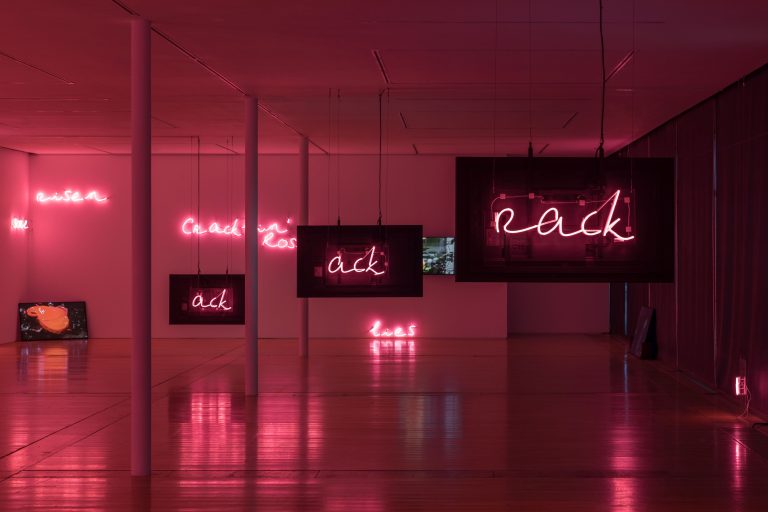An interesting example of how this can work is the record label OUTPUTS, run by Haroon Mirza and Jack Jelfs, whose latest release is a compilation album entitled Sampler1. The label was established in 2021 to put out The Wave Epoch (2020), an album and film that came out of a joint residency the two artists undertook at CERN in Geneva. The album imagines a faraway future in which inhabitants of this planet discover the remains of the Large Hadron Collider at CERN. The tracks are composed of layers of electronic music and spoken word, produced and performed by the artists alongside various collaborators including the musician GAIKA. Mirza and Jelfs had presented live versions of The Wave Epoch a few times, at venues including the Brighton Festival, but when they decided to put it out as an album their friend Nik Void – also a musician and artist – suggested they should set up their own label and that she would help them do it. (Originally Void managed the label with Mirza but Jelfs has taken over this role now.) The now sold-out physical release includes a ‘playable artwork’ made of varnished cardboard and a QR code for downloading digital files of the album and film. Today you can download or stream it on various platforms, including Bandcamp and YouTube.
 Haroon Mirza and Jack Jelfs, The Wave Epoch, 2023. Album artwork. Courtesy of OUTPUTS.
Haroon Mirza and Jack Jelfs, The Wave Epoch, 2023. Album artwork. Courtesy of OUTPUTS.
The experience of recording The Wave Epoch had a ripple effect. In a video call late last year, Mirza explained that, prior to this, he had ‘always worked with sound but had never really recorded anything […].’ He said, ‘For me the work was visual and audio at the same time, so a recorded version would be only half of it.’ With The Wave Epoch, it felt different: ‘When the audio becomes complex and rich, you get to the stage where you can put it out as its own thing.’ Mirza and Jelfs sensed there were other artists who must feel the same way, so they decided to keep OUTPUTS going as a platform for what they call ‘collaborations in music and art’. Sampler1 features eleven tracks by different artists who work with sound in their practices. They each contributed a piece of their own – Jelfs alone and Mirza with Helga Dorothea Fannon – and approached other people they knew to ask if they wanted to take part. ‘Everyone said yes,’ Mirza said. Only a couple of the invited artists didn’t manage to send something through in the end. ‘There’s a real appetite among people who use sound in their work for another way to put their work out into the world.’
Sampler1 came out in December 2023. It’s an eclectic selection, offering a good sense of the varied approaches that artists working with sound have taken. Some of the pieces were newly made but others were recycled or adapted from existing works. The oldest, David Toop’s ‘Yanomami Wayamou’, is a 1978 recording of ceremonial dialogue conducted by the indigenous Yanomami group in the Amazon rainforest. Opening the album is Jelfs’s ‘Morning Image’ (2021), one of the more obviously musical tracks. Jelfs chose to include it, he said, because it represented a ‘watershed’ in his career of recording electronic dance music. ‘You’re typically working in four-four timing. That piece was the first time that I just played a musical phrase that felt right, and when I looped it I really liked it – and then I worked out the time signature and it was something really ridiculous, in a weird tempo that doesn’t really fit with dance music.’ But you can still imagine happily dancing along to its fast percussive beats in a club or in your living room. There is a clear contrast with the track chosen to close out the album, Cory Arcangel’s ‘currentmood’ (2016), a seventeen-minute-long stretch of rippling white noise, processed using a digital music production technique called ‘sidechaining’ in which one audio track is used to control the volume of another. The resulting sound would usually be layered almost imperceptibly underneath music, a way of adding texture, but here it is loudly foregrounded: I didn’t manage to make it through the whole piece before a headache began to threaten.
 Marianna Simnett, ‘Firefly’, 2023. Video still. Courtesy of the artist and OUPUTS.
Marianna Simnett, ‘Firefly’, 2023. Video still. Courtesy of the artist and OUPUTS.
Arcangel’s track was first presented in a multimedia show of the same title at Lisson Gallery in London in 2016; similarly, Mirza and Fannon’s contribution is adapted from a two-channel video and electrical signal installation they exhibited at Lisson in 2023. ‘The Ancients Call It Ataraxia (OUTPUTS mix)’ (2023) is an arrangement of the audio components of that installation, based on the story of a group of children who undertake a tea ceremony with hallucinogenic mushrooms. The more incidental sections of sound have been stripped out to make the piece more ‘acousmatic’, as Mirza described it to me – this is a term used for works that are specially composed to be listened to in a recording rather than live. It is true that the fourteen-minute-long track holds your attention consistently while shifting between sections of spoken word and opera, layered over pulsing electronic beats. But the visual elements of Mirza and Fannon’s original work have not been entirely abandoned: the two-channel video is adapted into a music video, which can be watched on OUTPUTS’ YouTube channel. A handful of the other tracks also come with their own music video. Marianna Simnett’s ‘Firefly’ (2023), a piece that features flute and vocal performances in dialogue with AI-generated sounds, is accompanied by a video that is likewise composed of AI-generated images stitched together (both are adapted from a longer work from 2023 entitled GORGON).
Given the diverse sources of the individual tracks, listening to Sampler1 from beginning to end is inevitably a disjointed experience – but it was never meant to be a coherent aesthetic creation. One goal of the album, Mirza and Jelfs told me, is to boost the profile of OUTPUTS and to raise funds so that they can commission, produce, and distribute new work. They have hosted listening parties in person and on Bandcamp, where you can download either the whole album or individual tracks. They are also selling a single physical vinyl copy of the album, spread across eleven twelve-inch discs, one for each track, with a screen-printed sleeve that is hand-modified by the artists. ‘It’s a niche market, so we’re up against it in terms of running the label,’ said Mirza. These inventive sales tactics are required if the album is to reach listeners, allowing OUTPUTS to go on providing a channel for the hybrid practices of artists working with music and sound.
Gabrielle Schwarz is a writer based in London.



